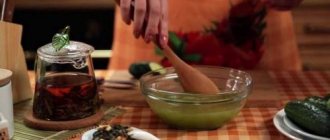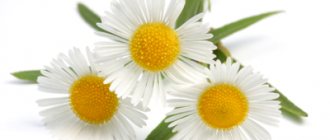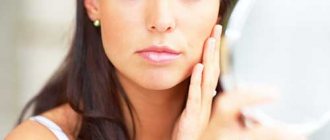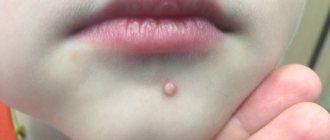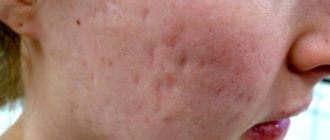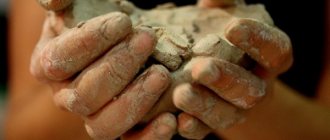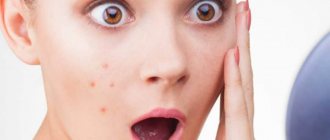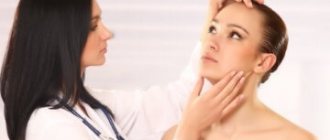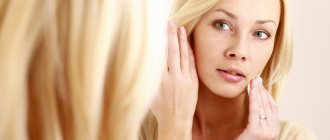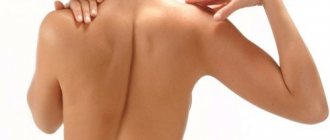H1 CC
Skip to content
- cosmetologist
- Contacts
Home »Health »Fighting acne and acne
Clean, smooth skin is not an easy task. Unfortunately, it has long been noted that acne is not only a teenage problem.
Even past adolescence, at a certain period of time many women face such a nuisance as acne on the skin.
There are a dozen reasons for this, and the search for an effective remedy sometimes takes so long that despair sets in.
And in today’s article, the Beauty Pantry decided to talk about a simple, affordable, but no less effective remedy that will help you cope with skin rashes at home. And this is formic alcohol.
More about formic acid
The healing acid contained in the secretions of ants has long been used as a painkiller. Ants secrete it not only as protection from enemies, but also as a preservative. Thanks to its antiseptic properties, the ants' food does not spoil. This fact became the main one regarding the benefits of formic acid for skin disinfection.
Antimicrobial properties make it possible to suppress the proliferation of special propinobacteria, which are the main cause of pustules. That is why the use of cosmetics containing formic acid is indicated for those prone to inflammation.
In nature, this substance is found in nettles, pine needles, and some fruits; secreted by ants and bees. Formic alcohol is widely used in medicine. In its pure form, acid causes burns.
Formic alcohol. Huge benefit
This is a medicine used for many ailments. The effect that formic alcohol has on acne is considered very effective. There is very little formic acid in the colorless liquid - only 1.4%! But this is enough for a powerful antibacterial effect. Alcohol dries out problem areas of the skin, and acid heals. This tandem allows the drug to be used in the treatment of acne.
Be careful when using the product for the first time. To prevent the skin from reacting with an allergic reaction, cosmetologists recommend testing formic alcohol on the inner bend of the elbow. If there is no reaction after a few hours, you can use the drug to combat acne.
Rules of application
For dry and sensitive skin, formic alcohol is not recommended. This is too aggressive.
- - Problem areas should not be pre-cleaned. Alcohol will do this. It is enough to apply a few drops to a cosmetic disc or cotton wool and wipe the acne areas. Single pimples can simply be smeared with a cotton swab soaked in the medicine.
- — For alcohol and acid to act on the skin, 10 minutes is enough. After which you should definitely apply a moisturizer. It is desirable that it be as natural a cream as possible, without chemical fragrances.
- — The skin must get used to the antibacterial effect of formic alcohol. Therefore, for the first three days you need to use the drug only once a day. If there is a noticeable improvement, and this happens in most cases, then you can do the procedure in the morning and evening. The duration of use of the medicine is individual, but no more than 2 months.
For those who find formic alcohol helpful for acne, cosmetologists recommend adding the drug to various masks. It is especially useful to use the product in combination with aloe pulp.
Undesirable consequences
The attitude towards ethyl alcohol in the field of medicine is ambiguous. Some doctors are of the opinion that it is better for a person not to come into contact with this substance at all. If you apply formic alcohol not pointwise (as experts advise), but affect healthy areas, the following changes occur in the skin:
- The hydrolipid layer, which protects the skin from the penetration of dirt and various microbes, is destroyed. Under the influence of alcohol, this film is temporarily burned, and the body becomes temporarily vulnerable. Although formic alcohol for acne is a relatively safe remedy, nevertheless, it is highly undesirable to abuse it.
- The cells in the upper layer of the skin die. Since the protective layer is damaged, intensive keratinization of epidermal cells, which are part of the hydrolipid film, begins.
- Fat begins to be released in even greater quantities. After damage to the protective layer of the skin, the body receives a corresponding signal, as a result of which the glands begin to intensively secrete sebum to create a new hydrolipid layer. Alcohol only dries out the skin for a while, after which it becomes even more oily.
Cell death and excess sebum lead not only to increased oiliness of the skin, but also to flaking. Thus, formic alcohol is really effective in the fight against acne, but it should be used extremely carefully and carefully. In some cases, the use of the solution may cause allergies, itching and burning of the skin. In this case, you must stop using the product.
Before using formic alcohol, it is recommended to consult a dermatologist. This is due to the fact that the drug is not advisable to use in all cases. If, for example, acne appeared in adolescence, which is most often associated with hormonal imbalance, then the use of alcohol would be a completely reasonable decision. But acne in adults can have many causes, most of which require consultation with a doctor and competent drug therapy.
Thus, applying formic alcohol is advisable only to the affected areas of the skin. The solution should be used with extreme care, since there is a risk of destruction of the hydrolipidic layer, which will lead to excess production of sebum and, accordingly, excess oily skin.
source
Is it possible to apply alcohol to pimples?
Previous: Acne Areas
Our mothers and grandmothers used alcohol solutions to treat acne.
Since then, a lot has changed in cosmetology, and the attitude towards alcohol has become ambiguous.
Is it possible to wipe the skin with alcohol solutions and what kind of alcohol will help cope with the problem?
- All information on the site is for informational purposes only and is NOT a guide to action!
- can give you an ACCURATE DIAGNOSIS !
- We kindly ask you NOT to self-medicate, but to make an appointment with a specialist !
- Health to you and your loved ones!
Reviews
Alina, 25 years old, Simferopol: “I have been using formic alcohol since I was 14 years old, when during puberty my entire face was covered with an ugly acne rash. My mother taught me how to burn pimples correctly so as not to harm healthy areas of the skin. Since then, I always keep this cheap and effective remedy on hand so that, if necessary, I can treat single acne that regularly appears before the onset of my period.”
Svetlana, 19 years old, Ryazan: “Alcohol with formic acid is an indispensable remedy for our entire family. I first started using it to combat teenage acne. It took several days for the emerging acne to dry out and disappear. But this drug is not suitable for my mother, because she has dry skin. But she periodically uses alcohol to rub her sore joints when they start to hurt in damp weather.”
How to use correctly
Before using alcohol for acne, you should decide which one you need.
After all, there are several varieties of alcohols themselves, and each of them has certain properties.
You should choose the alcohol solution that best suits your skin problems.
Cosmetologists do not recommend using undiluted alcohols on large areas of skin.
- After all, they all remove the protective fat layer and dry out the skin.
- In addition, such actions can cause the opposite effect and, instead of fighting acne, result in an increase in rashes.
Typically, alcohol solutions are diluted with water or added to other cosmetics intended against acne: masks, lotions, talkers.
Mechanism of action
A well-chosen combination of formic acid and ethanol allows you to tidy up your face or body skin in a short time and get rid of blackheads, pimples and acne. The product has a complex effect:
- antibacterial,
- drying,
- anti-inflammatory,
- locally irritating
- vasodilator
- decongestant.
As a result of the effect of an alcohol solution on epidermal tissue, microcirculation of blood and intercellular fluid improves, and the supply of cells with nutrients and oxygen is activated. The drug destroys pathogenic agents, accelerates tissue regeneration, relieves pain and inflammation, cleanses pores and removes blackheads. After the course of treatment, the skin becomes smooth and takes on a healthy appearance.
What alcohol to use to treat acne
If you yourself find it difficult to decide which alcohol to choose to fight acne, consult a dermatologist or cosmetologist.
We will analyze the main characteristics of alcohols that can be used against acne.
Salicylic
Salicylic alcohol for acne is the most popular.
Photo: salicylic acid is added to cosmetics to care for problem skin
It is included in cosmetic products for the care of problem skin.
By itself, it is an alcohol solution of salicylic acid, which has a concentration of 1 or 2%.
Advantages and disadvantages
Salicylic alcohol owes its popularity in cosmetology to the following properties:
- disinfects the skin;
- dries out pimples;
- has anti-inflammatory properties;
- normalizes sebum secretion.
At the same time, the effect of use can be noticed quite quickly; after 3-4 days, not only the number of acne, but also comedones and blackheads noticeably decreases, and the skin becomes less oily.
Photo: if the product is used incorrectly, the skin may dry out
But if salicylic alcohol is used incorrectly, you can fully experience its adverse side properties:
- dries the skin, especially when used simultaneously with other alcohol-containing or drying products;
- deprives the skin of its natural protective film, without which pathogenic microorganisms can become active;
- with frequent use, the sebaceous glands begin to work even more actively, trying to restore the fat balance.
Therefore, doctors recommend using salicylic alcohol spot-on or diluting the product with water.
Also, it should not be used more than 2 times a day, and this is provided that you have fairly oily skin.
It is safest to add salicylic alcohol to masks. This procedure will reveal all the advantages of this product and smooth out the disadvantages.
The mask below will help get rid of rashes and blackheads, but you can also use it to get rid of acne stains.
Photo: preparing a mask with clay and badyaga
Its recipe is simple:
- Take any cosmetic clay (but if you have a choice, give preference to blue) and badyagi powder (1 tablespoon of each ingredient).
- Stir and dilute a little with water until a homogeneous paste is obtained.
- Add 5 drops of salicylic alcohol to the finished mixture.
- The mask is applied to all problem areas and kept on the face until it dries out.
- After this, it is washed off with warm water and a nourishing cream is applied.
You need to perform such a mask once a week and preferably at night, since under the influence of badyagi the skin may turn slightly red.
Video: “Lotion recipe for problem skin”
Boric alcohol is also an alcoholic solution of boric acid.
Its concentration can vary from 0.5 to 5%.
Boric alcohol is suitable for a more gentle effect on the skin.
- They are good for both cauterizing individual elements and wiping the entire face for therapeutic or prophylactic purposes.
- Boric acid has a peeling effect if used in a course. It completely cleanses the skin not only of rashes, but also comedones.
But boric alcohol is best suited for those with oily or combination skin, because it gradually normalizes the activity of the sebaceous glands.
The main effect of boric acid solution is antiseptic.
Photo: boric acid solution prevents the inflammatory process
It destroys pathogens, preventing the inflammatory process in the pores. This product is not addictive to bacteria, so it is effective at any time of use.
Side effects
Side effects caused by the use of boric alcohol include:
- dry skin;
- skin redness;
- allergic reactions.
In this case, you need to either stop using the drug altogether or reduce the frequency of its application.
This is interesting: Pimples on the palms of a child
So, those with combination skin can apply boric alcohol to acne spots, and for oily skin types, wipe their face once a day. You can also purchase a solution with a lower acid concentration at the pharmacy.
Levomycetinic
Levomycetin is an antibacterial component with a wide spectrum of effects on pathogens.
Therefore, if acne has exactly this origin, it will come in handy.
To avoid drying out healthy skin, apply chloramphenicol only to pimples using a cotton swab.
Do this procedure no more than 2 times a day.
You can use chloramphenicol in various homemade facial lotions.
The recipe is complicated at first glance. In fact, the product is easy to prepare, costs very little, and the effect is even better than many store-bought ones.
Photo: means for preparing lotion
- For the lotion you will need salicylic acid (50 ml bottle, 2% solution), boric alcohol (50 ml) and chloramphenicol (5 grams).
- All this must be thoroughly mixed, the tablets must first be crushed into powder.
- Add 50 ml of medical alcohol to the resulting solution, pour into a clean bottle and place in the refrigerator.
- Be sure to shake this lotion before use.
Camphor alcohol is a solution based on a substance of plant origin.
It is widely used in various branches of medicine.
Camphor alcohol has a lot of useful properties in terms of fighting acne:
- antiseptic;
- wound healing;
- painkiller.
Photo: the solution is effective in treating large acne
The use of this particular solution allows you to treat large, painful pimples, which can subsequently leave marks on the skin.
This alcohol not only dries them out, but also reduces discomfort and allows the skin to fully recover without blemishes or scars.
Chatterbox Recipes
Camphor alcohol often serves as one of the components of lotions for problem skin - talkers.
Here are some recipes.
- Add 10 crushed tablets of streptocide and 4 tablets of chloramphenicol to 100 ml of camphor alcohol. Close the bottle well, shake everything thoroughly and let it brew overnight.
- Mix camphor, salicylic and boric alcohols in a ratio of 6:3:1.
All mash bottles are stored in the refrigerator, and the contents of the bottle are shaken before use.
It is applied only to problem areas without affecting healthy skin.
This is usually done with a cotton swab, but for large acne areas, you can apply it with a cotton pad.
Stain remover
Camphor alcohol can be very helpful if you need to remove acne spots on your face.
- To do this, it must be mixed with a pharmacy tincture of calendula in equal parts. Apply the product to the spots twice a day.
- If there are pimples and spots mixed on the skin, make another solution: add crushed chloramphenicol tablets (10 pieces) to a bottle of camphor alcohol, mix and let it brew. Gently lubricate problem areas with this product overnight.
How to get rid of purulent acne on the chin? Find out here.
At home, you can prepare acne cream with camphor alcohol.
- Take 40 grams of toilet soap (baby soap is good). Grate it on a fine grater and pour a glass of boiling water. Let it sit for a while. Stir until the soap is completely dissolved, turning into something like jelly.
- After cooling, add 50 ml of castor oil, 20 ml of camphor alcohol, 70 ml of glycerin to the resulting thick mass. You need to mix everything thoroughly.
This cream is applied to the acne area at night.
Benefits and harms
The beneficial effects of camphor alcohol on problem skin cannot be denied.
It really helps to cope with rashes faster, stops the proliferation of pathogenic bacteria, helps reduce the unpleasant symptoms that accompany rashes, and its locally irritating effect allows you to fight spots left by acne.
But if you violate the instructions mentioned in the instructions for the drug and cosmetologists, you can also get adverse consequences:
- severe irritation on the skin, especially dry, sensitive and damaged;
- peeling of the epidermis;
- burns;
- allergic reactions;
- dizziness and nausea;
- tachycardia;
- Long-term use of camphor alcohol leads to the accumulation of the substance in the body, which can cause seizures.
The consequences can be serious, so you should carefully monitor skin reactions and perform skin tests before use on sensitive skin areas.
Formic
Formic acid forms the basis of formic alcohol.
Photo: formic alcohol has a drying effect
It is recommended to use it only for oily or combination skin, because it has a strong drying property.
Formic alcohol is also a good antibacterial drug, so its use for acne is quite justified.
- To have a more gentle effect on the skin, this solution is applied exclusively to the spot, without pre-cleaning the skin.
- After waiting for the product to be completely absorbed (about 5 minutes), moisturizer should be applied to the skin. This procedure is performed at night.
Adding to masks
Formic alcohol has a milder effect if you add it to masks.
Here, for example, are such recipes.
- For a tablespoon of white clay, take half a teaspoon of formic alcohol and add water to a creamy consistency. The mask is applied to the face for 5-7 minutes and washed off.
- Mix the egg yolk with a tablespoon of aloe juice (it’s okay if it contains pulp) and add literally 5 drops of formic alcohol. Apply to face for 15-20 minutes. It is better to perform the procedure at night, no more than 2 times a week.
Photo: mask with white clay
Ammonia
Ammonia is known to everyone as a remedy for fainting. But does it help with acne?
It turns out that it can be used quite successfully.
- The only negative is the sharp, unpleasant odor, which causes increased heart rate and increased blood pressure. Therefore, it should be used with extreme caution.
- Ammonia has antifungal and antimicrobial properties. It can be used when washing. To do this, add a small amount of ammonia to the water.
- You can also wipe areas with acne with it, but it is better if you use it not on the face, but on other parts of the body.
Ethyl alcohol is a component of many medications. You can also treat acne with it.
How it works
Ethyl alcohol will not only dry out rashes, but also remove oily shine, get rid of blackheads and tighten enlarged pores.
But at the same time, it can also have an adverse effect on the skin.
- Along with getting rid of oily shine, a protective layer leaves the skin, which serves as a natural defense against microbes.
- The sebaceous glands will try to restore the layer of sebum and will begin to work even more actively.
- Dry skin is susceptible to any adverse effects.
Therefore, ethyl alcohol is used spot-on, no more than three days in a row or 2-3 times a week.
With chloramphenicol
The effect of ethyl alcohol is enhanced by the combination with chloramphenicol. This product is good for teenagers .
Photo: preparation of chloramphenicol solution
You can prepare the mixture yourself by dissolving 10 tablets of chloramphenicol in a bottle (100 ml). You can also purchase a ready-made solution at the pharmacy.
- Apply this solution pointwise twice a day.
- Once a week, you can wipe your entire face with ethyl alcohol and chloramphenicol. It will cleanse the pores and tighten them.
What alcohol to wipe your face with depends on the specific problems of your skin.
The choice should be taken very seriously and act in accordance with the instructions.
Analogs
“Bishofit”, “Gevkamen”, “Nicoflex”, “Rumalon” exhibit a similar effect.
“ ”
LLG plus/ Biomed Perm/ Infarma CJSC, Russia, etc. Price
from 60 to 120 rub.
Active substance: chloride-magnesium-sodium complex. Has anti-inflammatory and analgesic properties. Available in the form of brine and balm.
pros
- Contains only natural ingredients
- Has a beneficial effect on the entire body
- Side effects are very rare
- Can be used by pregnant and lactating women
Minuses
- External use only
- Contraindicated for children.
Borisov Medical Preparations Plant, Belarus / Moscow Pharmaceutical Factory, Russia Price
from 20 to 50 rub.
Active ingredients: oil of cloves, peppermint, eucalyptus rodum, camphor. Improves local blood circulation and has an analgesic effect. Available in the form of an ointment, packaged in 40 grams.
pros
- Consists of natural ingredients
- Can be used during pregnancy and lactation
- Affordable price
Minuses
- External use only
- Contraindicated for children.
Rinal Feinchemicals, Hungary Price
from 195 to 220 rub.
Active ingredients: capsaicin, ethyl nicotinate, glycol salicylate. Dilates blood vessels, stimulates blood circulation, relieves inflammation and pain. Available in the form of an ointment.
pros
- High efficiency
- Side effects occur in very rare cases
Minuses
- External use only
- Contraindicated for children, pregnant and lactating women.
“ ”
Bryntsalov-A, Verein, Russia / Robafarm AG, Switzerland Price
from 140 to 1240 rub.
The active substance is a glycosaminoglycanopeptide complex. Available in the form of a solution for intramuscular injection in ampoules of 1 milliliter.
pros
- High efficiency
- Side effects are extremely rare
Minuses
- Requires intramuscular administration
- The result becomes noticeable only after a few days
- High price
- Contraindicated for use in children, pregnant and lactating women.
A clear, colorless liquid with a characteristic pungent odor.
- 30 ml, 80 ml, 50 ml or 100 ml liquid in a bottle; one bottle in a cardboard pack.
- 80 ml or 100 ml of liquid in a bottle; 30 bottles in a cardboard pack.
- 30 ml of liquid in a bottle; 54 bottles in a cardboard pack.
- 30 ml of liquid in a bottle; 40 bottles in a cardboard pack.
- 1 liter of liquid in a bottle; one bottle in a cardboard box.
- 5, 20 or 10 liters of liquid in a plastic canister.
Questions and answers
Can it be applied to the skin in its pure form?
Photo: solutions are recommended to be applied pointwise
- Alcohol solutions are only suitable for those with oily or combination skin, but even in this case they should not be used to wipe the entire face.
- They are applied pointwise.
- To avoid side effects, it is better to dilute alcohol with water or add it to masks and lotions.
Are there any contraindications
Any alcohol solution has its contraindications. The common ones are:
- increased sensitivity of the body;
- violation of the integrity of the skin at the site of application.
Contraindications may include pregnancy and lactation.
Therefore, before using an alcohol solution, be sure to read the instructions for it.
Do different alcohol solutions help treat acne?
Photo: review of acid treatment
We learn about this from reviews of their use.
Photo: review of the use of solutions
How to quickly remove an internal pimple on the face? Find out here.
Is it possible to remove a large pimple on the back? Read on.
Photo: review of the use of chatterbox
This is interesting: Wind acne - causes and methods of how to prevent acne from appearing on the face
The main thing is to choose the right solution and apply it correctly.
Otherwise, it can seriously harm or worsen the condition of the skin.
Video: “Alcohol lotion for problem skin”
My daughter uses salicylic alcohol for acne. At the age of 13, with the onset of adolescence, a lot of rashes appeared and it was impossible to get rid of them completely. But if at the first sign she begins to lubricate the pimples with salicylic acid, then they quickly go away, and most importantly, there is no redness or huge bumps on the face.
I started getting acne when I started taking oral contraceptives. I quickly changed the pills, but the acne did not go away. Boric alcohol helped. The skin quickly cleared and became refreshed. I still use it as a preventative measure.
I have used so many products to combat acne that I could write a book about it myself. But I only found out about formic alcohol about a year ago. I was suspicious, even expensive drugs don’t always help me, but this one is too cheap. At first I just wiped my face with it once a day. But despite the nourishing cream, after applying alcohol, my skin still dried out. A mask of aloe juice with formic alcohol came up. My skin feels really good afterwards and my acne really goes away.
Using formic alcohol for acne at home
Even past adolescence, at a certain period of time many women face such a nuisance as acne on the skin.
There are a dozen reasons for this, and the search for an effective remedy sometimes takes so long that despair sets in.
And in today’s article, the Beauty Pantry decided to talk about a simple, affordable, but no less effective remedy that will help you cope with skin rashes at home. And this is formic alcohol.
Indications for use
Acne is far from the only area in which the product is used. It is also used as a rub to relieve pain that accompanies diseases of the spine and joints.
The anti-inflammatory and analgesic properties of formic alcohol allow it to be used for the following conditions:
- rheumatism,
- neuralgia,
- myalgia,
- osteochondrosis,
- arthrosis,
- spasms and cramps in the muscles,
- bruises,
- muscle and tendon strains,
- neuritis,
- injuries.
In all these conditions, formic alcohol acts as an anesthetic.
The solution is characterized by an aggressive effect on the skin, so it is often used to combat unwanted body hair. In this case, the treated area should be cleaned, moistened with the solution and rinsed with water after 15 minutes. You can also add the product to body cream. In this way you can avoid drying out the skin.
Ant alcohol for acne. Composition and properties.
Formic alcohol is a medicinal product that is a weak solution of formic acid (1.4%). This colorless liquid has a pungent odor. Formic acid itself (in its pure form) has a powerful antibacterial effect, in strong concentrations it can cause skin burns (fortunately, only processed acid in the form of formic alcohol can be found on the open market).
Alcohol, as you know, dries and disinfects the skin. The drying and antimicrobial properties of formic alcohol determine its use in the fight against acne.
Contraindications
Main contraindications:
- individual intolerance;
- pregnancy and breastfeeding (no studies conducted);
- age up to 7 years (due to immaturity and special sensitivity of the skin).
In addition, it is not allowed:
- Use of the product internally, as well as instillation into the ear and nasal passages.
- Application to mucous membranes, ulcers and wounds.
- Disinfection of the skin at the injection site.
The medicinal properties of formic alcohol, the small number of adverse reactions and low cost explain its high popularity among people with skin problems, muscle and joint pain. But, since this is a full-fledged drug, its use should be approached with caution, taking into account the rules of use and the individual characteristics of the patient.
The word “alcohol” is inevitably associated with disinfection, even if it concerns the face. What’s simpler: a pimple came out, burned it with alcohol - and the problem was solved.
There are enthusiasts who are ready to use this alcohol to wipe their skin “for preventive purposes.” However, one must keep in mind: before deciding on such procedures, it would be good to study the properties of alcohol-containing substances and their effect on the skin. Moreover, there are quite a few types of alcohols, and each has its own “character”.
Ant alcohol for acne. Use at home.
Like any alcohol-containing product, formic alcohol used in the fight against acne can dry out the skin, cause allergies or other negative skin reactions.
To prevent this from happening, you should use formic alcohol for acne carefully. Before using the product for the first time, Beauty Pantry recommends that you conduct a skin sensitivity test. And only in the absence of allergic reactions (after a few hours) can you use alcohol to treat problem areas of the skin.
It is impossible not to notice that cosmetologists primarily recommend formic alcohol for acne to those with oily, combination skin. If your skin type is closer to dry or sensitive, perhaps formic alcohol will be too aggressive and will not suit you.
Well, having said about precautions, we can move on to how to use formic alcohol for acne at home.
Everything is very simple here - alcohol is applied to a cotton pad and rubbed into the skin with soft, circular movements, as if massaging it. However, for the most part, try to treat only problem areas of the skin.
There is no need to pre-cleanse the skin, otherwise this may cause excessive moisture loss from the skin. After 5-10 minutes, when the alcohol dries, apply a light moisturizer to the skin.
In the first few days, we recommend that you perform a similar procedure once a day, before going to bed. After 3-5 days, if you think that formic alcohol is beneficial for you, the intensity can be increased to twice a day - morning and evening.
You can increase effectiveness by alternating formic alcohol for acne with more gentle masks for the skin (for example, based on a decoction of herbs or aloe juice). The duration of alcohol use is also individual (from 7 days), but should not exceed 2 months in a row.
Do not forget! Formic alcohol is a medicinal product. Therefore, be careful when using it at home.
Synonyms of nosological groups
| Category ICD-10 | Synonyms of diseases according to ICD-10 |
| M60 Myositis | Inflammatory soft tissue disease |
| Myositis | |
| Fibrositis | |
| Fibromyositis | |
| M79.2 Neuralgia and neuritis, unspecified | Pain syndrome with neuralgia |
| Brachialgia | |
| Occipital and intercostal neuralgia | |
| Neuralgia | |
| Neuralgic pain | |
| Neuralgia | |
| Neuralgia of the intercostal nerves | |
| Neuralgia of the posterior tibial nerve | |
| Neuritis | |
| Traumatic neuritis | |
| Neuritis | |
| Neurological pain syndromes | |
| Neurological contractures with spasms | |
| Acute neuritis | |
| Peripheral neuritis | |
| Post-traumatic neuralgia | |
| Severe neurogenic pain | |
| Chronic neuritis | |
| Essential neuralgia |
Alcohol for acne and oily skin: how does alcohol affect the skin?
Most cosmetics for the care of problem and oily skin contain alcohol. Many have heard or read advice about “burning a pimple with alcohol” and wiping your face with drying agents containing alcohol. Let's figure out whether alcohol has a good effect on the skin and whether alcohol helps with acne and in caring for oily problem skin. And why are there so many drying products with alcohol for acne in stores?
When you use a cleanser or toner with alcohol, you get a quick effect - right after applying the product, the skin is cleansed, disinfected and dried, and remains dry a little longer. You see the effect of clean, smooth skin. It seems like an excellent result, and it seems that acne from alcohol should go away faster, and the skin should dry out and improve . This gives rise to myths about the benefits of alcohol for acne and oily skin . But in fact, using alcohol against acne or just to wash your face, you quickly drive your skin into a trap. Remember: the more you dry your skin, the more it begins to secrete sebum and water to restore the water-lipid film . Thus, the skin becomes even more oily, shiny and sweaty. You dry it again, and more often. And the further you go, the more often you have to dry it... And what happens to acne in this case? And their number is also growing. The reason is simple: with abundant secretion of sebaceous gland production and exfoliation of the skin, the pores are quickly clogged with this composition, and inflammation begins. You continue to dry out new pimples, the skin exfoliates even more and becomes even more oily, and new pimples appear. Stop tormenting your skin, it will only thank you.
Alcohol for acne and oily skin: how does alcohol affect the skin?
So, what does alcohol do to the skin:
- It destroys the water-fat (hydrolipid) film on the skin, thereby making it susceptible to various bacteria, microbes, and no longer protected from dirt. Aggressive washes do the same thing.
- To replenish the fat film, the skin secretes even more oil and becomes oilier.
- The cells of the surface layer of the skin begin to die more actively, and they clog the pores, which leads to inflammation.
- The skin becomes dry and flaky. At the same time it can be very oily, but with flaking
How to find alcohol in skin care products for oily and problem skin? Check the ingredients. Especially the first 5-6 components, if there is alcohol among them, then there is a lot of it in the jar. Although in small quantities it causes irritation in many people with sensitive skin. So, bottles that contain component names containing the word Alcohol, Ethanol or Ethyl (except for cetyl alcohol, stearyl alcohol - these are cosmetic thickener additives).
The most dangerous alcohols for any skin are:
- Ethyl alcohol (ethanol)
- Methyl
- Isopropyl
- Benzyl
Remember: alcohol does not help with acne! Salicylic, chloramphenicol, boric, camphor, formic and ammonia alcohol should also not be used for acne. These are all alcohol solutions with a high alcohol content.
In addition to alcohol, their composition also contains, depending on the solution:
- Salicylic acid. Can dry out skin even more than alcohol itself
- Antibiotic chloramphenicol. There is a separate article about antibiotics for oily and problem skin. Without a doctor’s prescription, it, and, accordingly, chloramphenicol alcohol, should absolutely not be used for acne.
- Boric acid. An aggressive antiseptic and skin-drying drug. May cause dry skin, irritation and toxic reactions in the body
- Camphor. May be very irritating to skin, cause allergies and burns
- Formic acid. Strong antibacterial effect. Dries and irritates the skin, disrupts the water-lipid film.
- An aqueous solution of ammonia (this is ammonia). A good solvent for many organic and inorganic compounds. Powerful disinfectant. Used in household chemicals for washing and cleaning. Destroys the water-lipid film.
This is interesting: Aspirin face mask (for acne, wrinkles) and reviews about it
Products in which manufacturers put the most alcohol:
- Cleansing gels for problem skin
- Scrubs and masks for problem skin
- Tonics and lotions for problematic and oily skin
- Alcohol spot treatments for acne
- Alcohol tinctures of herbs, for example, calendula tincture
- Special alcohol solutions: salicylic, chloramphenicol, boric, camphor and ammonia for acne
- Pharmacy pimples for acne (may contain salicylic, camphor, boric, ammonia and other alcohols)
Very often, alcohol or vodka can be found in recipes for homemade masks for oily problem skin.
By the way, alcohol is contained in many well-known products and luxury cosmetics. For example, in SISLEY Lotion au Pamplemousse . Clinique Mild Clarifying Lotion is a toner with salicylic acid, parabens and silicones. Bioderma Sensibio AR cream contains Arachidyl Alcohol, mineral oil, silicones, parabens.
The harm of alcohol against acne and oily skin
Let's highlight the reasons why many manufacturers use alcohol in cosmetics for acne and oily skin , and why alcohol actually harms the skin:
- Alcohol cleanses the skin well. Have you ever tried, after washing your face, to take a cotton pad soaked in alcohol and wipe your skin? What's happened? There were marks left on the cotton pad. And it seemed to you that only alcohol and tonics with alcohol can completely, “squeaky clean” cleanse the skin. In fact, on that cotton pad there were traces of that same water-lipid protective film of the skin . Those. it remained on the skin after washing with a mild product that did not injure the code, and was washed off with a product with aggressive alcohol. We have already written about what washing off the film leads to - there is no protection for the skin and increased secretion of sebum occurs. Remember: sebum is essential for your skin, it is its helper and protector! There is no need to use products with alcohol or aggressive surfactants to polish the skin, this will only harm it. Wash and wash with mild products, without alkali, sulfates and alcohol.
- Alcohol disinfects the skin. The skin cannot be disinfected unless absolutely necessary; this destroys the water-lipid layer on the skin and leaves it defenseless. It seems that they wiped it with alcohol and killed all the bacteria and germs. However, without a protective film washed away along with the bacteria, the skin became susceptible to all the bacteria and microbes that would fall on it in the near future. Those. you got rid of some bacteria and gave the green light to others .
- Alcohol dries out the skin. Is it possible to wipe (cauterize) pimples with alcohol? Essentially, products with alcohol against acne dry them out , they seem to go away faster. But along with the pimple, the entire skin dries out, and if you applied it to a spot, the skin around the pimple dries out. In these places, the formation of new cells increases, the keratinization of old skin particles and the secretion of sebum increases. Dead scales and excess oil clog the pores and a new pimple forms. Those. It turns out not alcohol for acne, but acne from alcohol . By the way, if you dry and burn a pimple too much, there will be a greater likelihood of post -acne infiltration, i.e. a dark spot from a pimple that remains on the skin for a long time.
Conclusions about using alcohol for acne
In this article we answered the following questions:
- Why are myths about alcohol against acne and oily skin so common?
- why do manufacturers often use alcohol in products for acne and oily skin?
- does alcohol help acne
- Is it possible to wipe (cauterize) pimples with alcohol?
- What are the harms of using alcohol?
- Is it possible to use ethyl, salicylic, chloramphenicol, boric, camphor, formic and ammonia alcohol for acne
We think you will forever remember that alcohol should not be used not only for acne and oily skin, but also for any other skin. Share in the comments if you knew how alcohol affects our skin and if you use products with alcohol. Check your washes, toners and lotions for the presence of alcohol.
